Late Night Art City Life Animation Grafiti Night Drive
Contemporary Graffiti and the City That Never Sleeps
An test of an intricate art class hidden in plain sight.
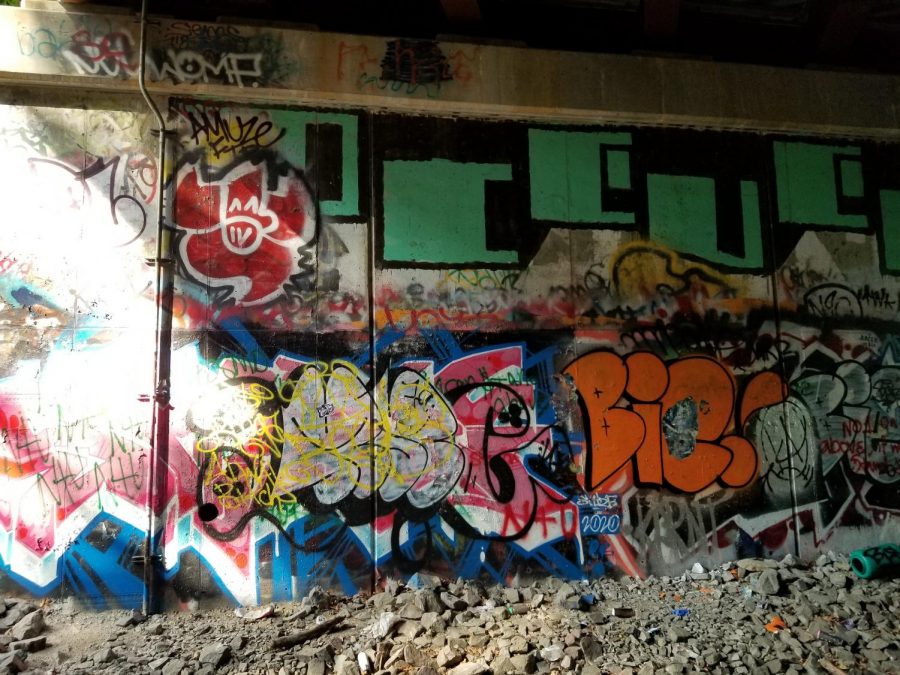
Alex Gallagher
Neglected underpasses and walls get local hotspots as graffiti writers notice time and space to execute their piece of work.
My first existent encounter with graffiti was a frigid February night— Valentine's 24-hour interval. I recall it being so due to a quippy exchange I had with an attendee at a McDonald'southward drive-through in the later hours of the night, both lamenting how we had other things we'd rather exist doing that night, rather than continuing our nights without a special someone. But in a stroke of irony that dark, I may as well take found a special someone, in an fine art rather than an individual, finding an entrance to a world I otherwise would not take been aware of hidden correct before my own eyes. Earlier that dank night, graffiti had simply been another splotch of color in the rich canvas of New York City; strings of words, letters, and numbers that seemed to be void of any meaning, scattered effectually frantically throughout the city in every nook, cranny, postbox, and pole, each slice unreadable by my untrained eye and indiscernible from its compatriots. Of form, there was likely plenty of graffiti that I could read, as the art is not inherently complicated or confusing, in fact quite the reverse, but information technology meant goose egg to me. With many graffiti 'tags' not in fact beingness words with meaning on their own, such every bit the 'goyo' who frequents traffic lite boxes in my neighborhood and the '420ove' who enjoys leaving large colorful pieces where y'all would least look them, I was often left wondering what was behind the colorful markings, simply never teased enough by the art as to get out looking for the answers. On that Valentine'south Twenty-four hours yet, I was formally introduced to the art form again. On an unfrequented underpass deep in Forest Park, taken in that location with friends with a similar urge to explore the nooks and crannies otherwise ignored, I became acquainted with graffiti in a more intimate manner than ever before. This fourth dimension it was a crashing wave of color rather than scattered splotches, as the underpass, lit upwards by the flashlights we were carrying, erupted in the colors of years of spray paint, with no inch of wall left untouched besides the precipices of the underpass, kept safe from the majority of writers frequenting the spot due to the elementary fact that the average person cannot actually reach much higher than a couple feet above their heads. Here was a city of Troy of urban fine art, each level of city existence built on top of the ruins of its predecessor. It was a constantly developing location changing in character in betwixt subsequent visits, shifted in sustenance and color each time by those who had visited in my absenteeism. I had come for photographs, just left with a passion, a reignited interest for the art grade which covers our city; and with the Coronavirus crashing into our city, country, and country, this time around I found plenty of fourth dimension to develop it. Graffiti from an outside perspective is, frankly, a mess, figuratively as well every bit literally. Enough of it is oft unreadable to the boilerplate person as artists push stylistic and structural limits to their breaking points, but even in the form of simple cake messages information technology remains illegal, damaging, and disruptive. Contemporary graffiti can be seen as a sort of cross betwixt calligraphy and raw expression, equally graffiti writers are really just, at the core, but writing words down. Calligraphy is described as "the art of giving course to signs in an expressive, harmonious, and good style," and graffiti arguably fits correct into it; although peradventure not always in tune with the "harmonious" and "practiced" parts of the definition. There are no real entry requirements to the art, and at that place is no organized centrality backside it (an obvious outcome of the aforementioned 'artistic expression' also coincidentally beingness illegal and disruptive), leading to quality graffiti intermingling with and appearing direct alongside impressive displays of artistic skill and experience, glaring disparities between the new and the old, the amateurs and the experienced, as both groups of people frequent the same spots and often the same walls. You will non find a 4th grader's arts and crafts piece hung up alongside a Van Gogh, and you will not run across a beginner sculptor'due south work placed beside Rodin's, but quite often in the streets of New York Metropolis will yous be able to come up across hastily scrawled names side by side with the works of skilled and highly regarded writers. This leads to a rich mix of work from all sides of the artistic spectrum being thrown together into one big mess, and offers an amount of social depth that I have non found much of elsewhere. Whereas in an fine art museum or gallery you lot are presented with a piece of art, the name that goes along with information technology, and ways to contact and communicate with those who created it, you are not awarded such privileges with graffiti. Identification of authorship exists, as graffiti quite literally consists of names, but the means of contacting a specific artist often end there. This leads to a vast community of people who may accept never met, but limited and communicate through the paint in their tin can and the pen names they get by. Unspoken rules and understandings are then a necessity for an art grade that exists in anonymity. This includes respecting the work of others (especially those who are old, deceased, or highly revered), refraining from copying elements of other's work, and avoiding the harming of personal belongings in artistic execution. Respect is ironically integral to an art form which exists in the defacement of public and private property, as the anonymity of the whole thing means that most of the time the but thing actually regulating someone is themselves. At that place is no police strength that will hunt you lot down if you vandalize someone else'south vandalism or copy the work of some other creative person, merely to exercise and so would attract plenty of unwanted attending that one would be better without. Breaking the laws of those already engaging in illicit action is a mix to be avoided. Although graffiti is a hell-raising and disorganized art form, in that location is a substantial amount of guild to the chaos. 'Good' graffiti can certainly exist differentiated from 'bad' graffiti, as all of its writing can ultimately be boiled down to one thing: alphabetic character structure. The art form is certainly not constrained by it, as information technology thrives off of constant reinvention and originality, but it is built on it. In all quality pieces of graffiti will you observe bars, a term regarding the written construction of a letter of the alphabet. This is the template from which artists develop from, and the means by which pieces remain legible. The capital letter R, for example, consists of three bars: a spine, a bowl, and a leg; if non for the leg, information technology is no longer an R but rather a P; if not for the basin, it is not a letter at all anymore. You volition find dozens upon dozens of written R'southward in graffiti effectually New York Urban center, but the similarity between them all volition exist that: three bars. Written pieces also crave consistency and alignment, just as any other comparable form of calligraphy. This seems simple enough with basic writing, as all of united states exercise on a daily footing, but when pushing the limits of written messages and seeking to find originality and creativity in a rather rigid alphabet, it can exist like shooting fish in a barrel for individuals to lose track of the original letter they are seeking to stand for and consequently have the quality of their work deteriorate. With a concrete understanding of letter construction, writers are then able to elevator off from it, adding unique style and expression into their work and gaining both recognition and reputation on the streets they write on. This leads to the expressive and elaborate pieces that can be found all over the city; complex in design but ultimately compliant in structure. Graffiti forces itself upon the passerby, never existence wanted yet nonetheless actualization, covering the varied surfaces of public spaces with letters, numbers, and all sorts of doodles. It is painted over, buffed out, logged, and persecuted, only the art form continues to non only exist but flourish in urban areas, thriving off of the anonymity and vastness that a cities provide, being presented with more empty nooks, crannies, postboxes, and poles than will e'er be filled, and an audience of passersby forever present equally long as the city stands. Though I practise non partake in information technology (and highly recommend that you follow conform), I am engaged and intrigued by it, taking careful note of the marks left by those around me as I live and exist in the city around me. A adult understanding of the art class has allowed me to acquire to appreciate the craftsmanship behind the adept pieces thrown up around me, also every bit take a sort of private, personal pride in being able to identify the 'bad' graffiti, agreement the errors that the artist is making. In the words of the Disney moving picture Ratatouille , "in many ways, the work of a critic is easy. Nosotros risk very little, nonetheless enjoy a position over those who offer upwards their work and themselves to our judgment." I do not condone the damages done by the art form nor do I encourage its proliferation, simply I have learned to appreciate i,t every bit it appears aslope us in New York City, equally information technology has been hither before united states and will go along to exist long after united states of america. I recognize the skill and craftsmanship behind information technology, allowing it to enhance my view of the world rather than detract from it, finding myself as engaged as I would be at the Guggenheim or MoMA each time I am out and about in the metropolis. As whether we agree with its execution or non, and whether nosotros condone its being or encourage it, this splotch of color on the rich canvas of New York Metropolis is here to stay; and there's more than to information technology than meets the eye. I practice not condone the damages washed past the art grade nor do I encourage its proliferation, but I have learned to appreciate it, every bit it appears aslope us in New York City, equally it has been here before u.s. and will continue to exist long subsequently u.s.a.. 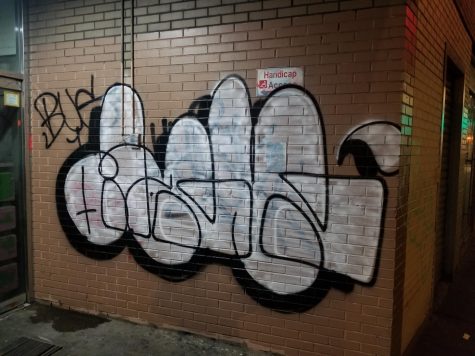
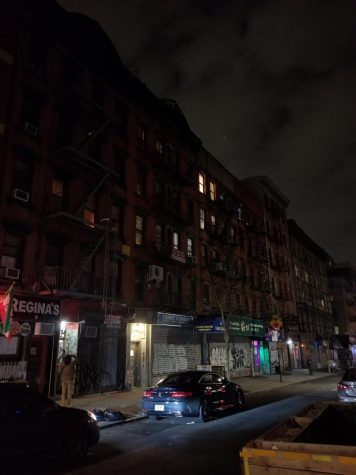
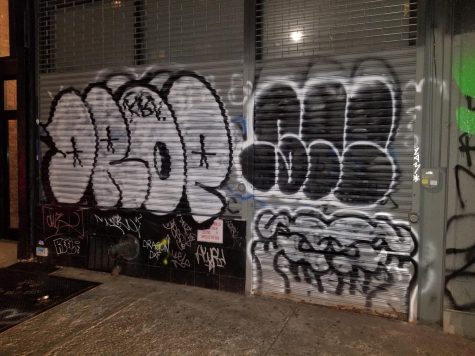
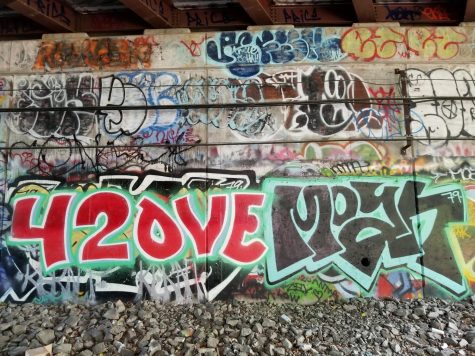
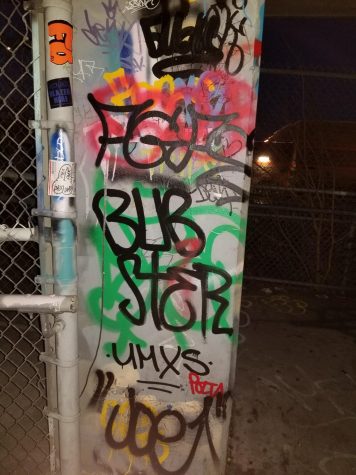
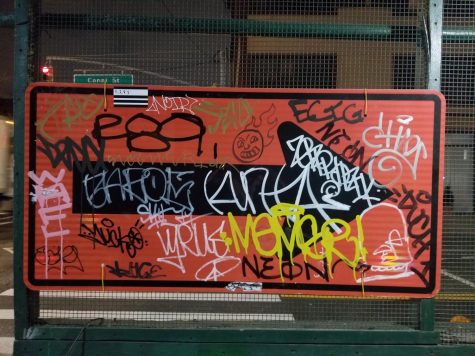
alvaradodisentithe.blogspot.com
Source: https://thesciencesurvey.com/arts-entertainment/2021/03/18/contemporary-graffiti-and-the-city-that-never-sleeps/
0 Response to "Late Night Art City Life Animation Grafiti Night Drive"
Post a Comment